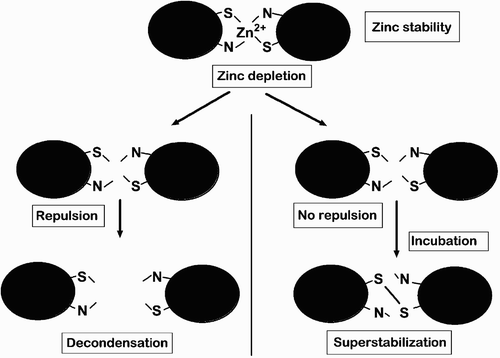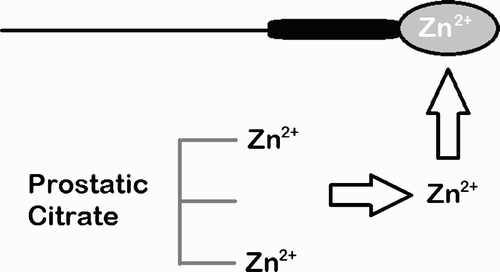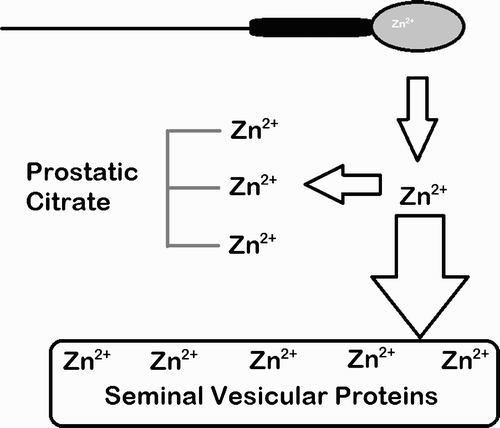Figures & data
Figure 1. Schematic overview of dual actions by Zn2+ stabilizing the structure and at the same time preventing formation of surplus disulfide bridges. Depletion of zinc allows two biologically different outcomes: (1) ‘immediate decondensation’ if repulsive forces are permitted to separate the chromatin fibers; and (2) otherwise unbound thiols close to each other may oxidize into disulfide bridges creating a ‘superstabilized chromatin’.

Figure 2. Schematic representation of the retention of chromatin zinc of spermatozoa expelled suspended in the first ejaculate fractions dominated by prostatic fluid. Zn2+ is secreted from the prostate as free zinc and zinc bound to citrate.

Figure 3. Schematic representation of the zinc chelating properties of the liquefied whole ejaculate. The sperm chromatin can be deprived of Zn2+ due to zinc binding action of (1) seminal vesicular proteins and (2) citrate due to increased affinity for zinc at increased pH, both actions caused by the addition of seminal vesicular fluid.
